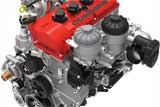| |
|
| |
|
 |
Supply
Chain by the Numbers |
| |
|
| |
- July 17, 2014 -
|
| |
|
| |
|
| |
|
| |
New Truck Engine Dramatically Reduces C02 Emissions; US Factory Utilization Continues to Hit Ceiling; Big Investment in VW Chattanooga Plant After Union Voted Down; Amazon Petitions for Drone Testing |
| |
|
| |
| |
| |
80%
|

|
|
|
| |
| |
|
86%
|
|
The percent of shipments by Amazon.com that weight less than five pounds – the cut off weight for the use of delivery drone aircraft in Amazon's research on "Amazon Prime Air" service in recent years. That as Amazon petitioned the Federal Aviation Administration this week to allow it to test such drone deliveries in its home Seattle market. "We're continuing to work with the FAA to meet Congress's goal of getting drones flying commercially in America safely and soon," said Paul Misener, Amazon's vice president of global public policy. "We want to do more research and development close to home." Amazon’s stock actually rose 6% on the news.
|
| |
| |
|
| |
| |
76.1% |
|
Level of manufacturing capacity utilization in the US in June, according to the latest report from the Federal Reserve this week. The level of US manufacturing output at long last is poised to finally exceed the peak levels of 2007 some seven years later, reaching a score of 97.7 in June against the baseline year score of 100 for 2007. While capacity utilization has risen slowly and steadily from the disastrous low of just 64% in mid-2009, the long run (40-year) average is 78.7%, or 2.6 percentage points below the June number. 76% or so has been the ceiling in this metric for several years now, and that 2-3 percent delta between current and average utilization represents a lot in terms of increased wages, GDP growth and more. In 1998, manufacturing capacity reached some 85%, the high point over the past few decades.
|
| |
| |
|
|
|
| |
 |
 |
| |
|
|
| |